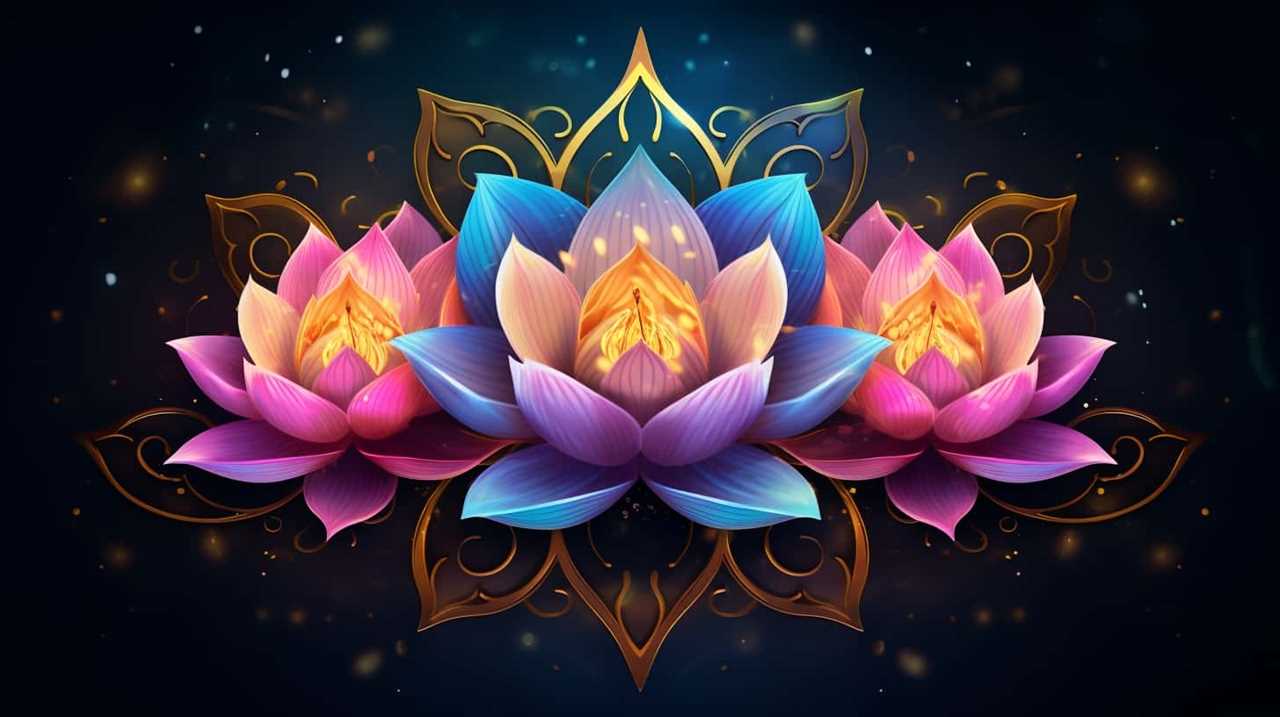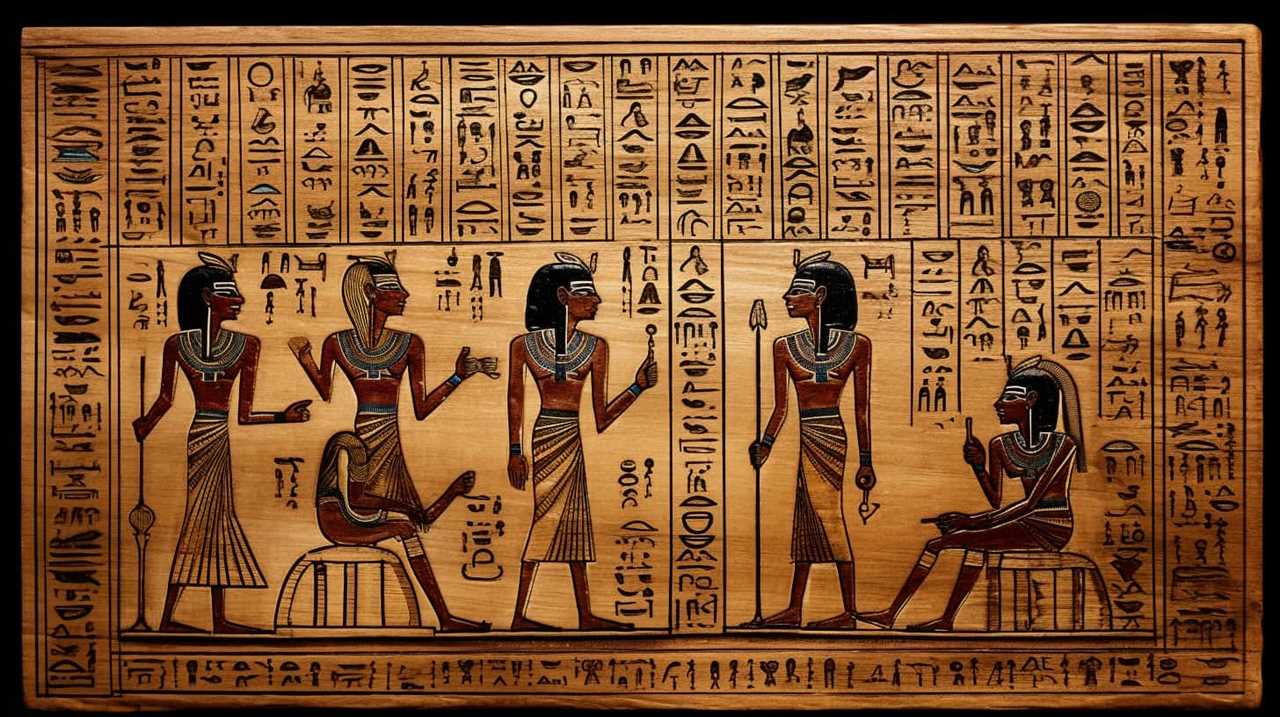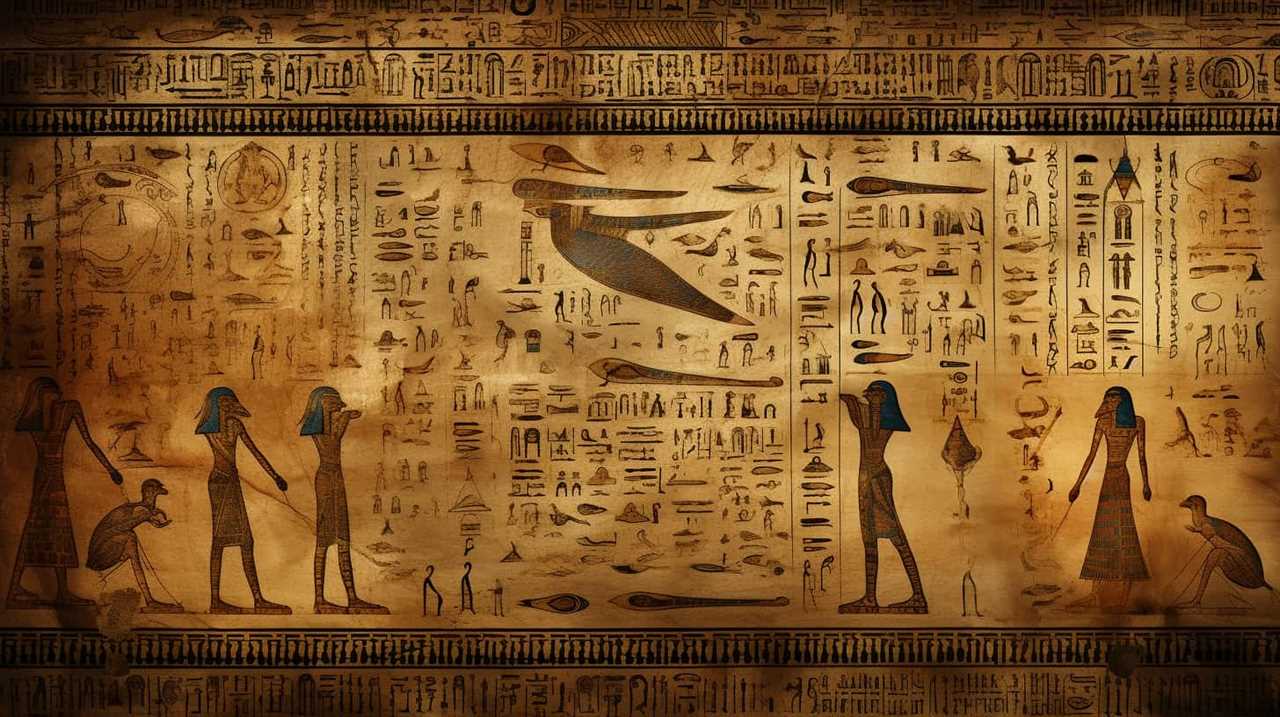Are you prepared to embark on a thought-provoking journey? Look no further, as ‘Elevate Your Thoughts: Socratic and Platonic Inspirations’ is here for you.
This captivating collection of wisdom will transport us to the heights of intellectual mastery. Dive into the profound teachings of Socrates and Plato, as we unravel the secrets of virtue, knowledge, and truth.
Through philosophical reflections on justice, we will examine the very fabric of our society. Prepare to be inspired by the timeless quotes from ancient Greece, as we strive to elevate our thoughts and reach new levels of understanding.
Join us on this transformative quest, and together, let us unlock the profound insights that lie within the realms of Socratic and Platonic philosophy.

Key Takeaways
- Socratic teachings emphasize the importance of critical thinking and self-examination in attaining true knowledge and virtue.
- Plato’s insights on knowledge highlight the significance of reason, logical analysis, and dialogue in pursuing truth.
- The pursuit of truth involves questioning, dialogue, and a deeper understanding of the world, expanding our knowledge.
- Socrates’ teachings and the Socratic method continue to be influential in education and philosophy, while Plato’s ideas shape subsequent philosophical exploration.
The Wisdom of Socrates
In our exploration of the profound teachings of Socrates, we find ourselves transported back in time to ancient Greece, where his wisdom continues to resonate with us today. Socrates, renowned for his Socratic dialogues and the Socratic method, was a philosopher who believed in the power of inquiry and questioning. He believed that true knowledge could only be attained through a process of critical thinking and self-examination.
The Socratic dialogues, which were written by his student Plato, are a testament to the intellectual depth of Socrates. In these dialogues, Socrates engages in conversations with various individuals, challenging their beliefs and exposing the flaws in their arguments. Through this method, he sought to uncover the truth and guide others towards a deeper understanding of themselves and the world around them.
Socrates’ teachings have had a lasting impact on the field of philosophy. His emphasis on self-awareness, critical thinking, and the pursuit of knowledge has become foundational in the study of philosophy. Even today, the Socratic method is widely used in educational settings, encouraging students to think critically and engage in thoughtful discourse.
As we delve further into Socrates’ teachings on virtue, we’ll see how his philosophy extends beyond mere intellectual inquiry and into the realm of moral and ethical development.

Socratic Teachings on Virtue
Exploring Socrates’ teachings on virtue, we discover the profound impact of his philosophical insights on moral and ethical development. Socrates believed that virtue was the key to living a good life, and he devoted much of his teachings to the exploration of virtue ethics in ancient Greece. He believed that true virtue could only be attained through self-examination and critical thinking.
One of the most notable aspects of Socrates’ teachings on virtue was his use of Socratic questioning techniques. Through a series of probing and thought-provoking questions, Socrates aimed to challenge his students’ beliefs and encourage them to critically examine their own moral values and actions. This method of questioning not only helped individuals to develop a deeper understanding of virtue, but also fostered a sense of personal responsibility and self-awareness.
Socrates’ emphasis on virtue ethics was revolutionary in ancient Greece, where morality was often dictated by social conventions and traditions. By focusing on the importance of personal character and moral integrity, Socrates encouraged individuals to strive for excellence in all aspects of their lives.
Plato’s Insights on Knowledge
As we delve into Plato’s insights on knowledge, it becomes evident that his philosophical perspective offers a unique and profound understanding of the nature and acquisition of knowledge. Plato’s epistemology, developed through his Socratic dialogues, explores the complexities of knowledge and the methods by which it can be obtained.

Here are five key insights from Plato’s teachings:
- Knowledge as Recollection: Plato posited that true knowledge isn’t something we acquire, but rather something we recollect from a previous existence, suggesting that we’ve an innate understanding of the world.
- The Theory of Forms: Plato claimed that the physical world is merely a reflection of an ideal realm of Forms. True knowledge lies in grasping the eternal, unchanging essence of these Forms.
- Dialectic and Dialogue: Plato believed that knowledge is best pursued through dialectic, a method of inquiry involving critical questioning and discussion. Through Socratic dialogue, truth can be uncovered and understanding can be deepened.
- The Role of Reason: Plato emphasized the importance of reason in acquiring knowledge. He believed that rational thought and logical analysis lead to true understanding.
- The Cave Allegory: Plato’s famous allegory illustrates the journey from ignorance to enlightenment. It portrays the human condition, where most individuals are trapped in a world of shadows, unaware of the truth that lies beyond.
Plato’s insights on knowledge lay the foundation for the subsequent exploration of the pursuit of truth. Through his teachings, we’re challenged to question, engage in dialogue, and seek a deeper understanding of the world around us.
The Pursuit of Truth
As we embark on the exploration of the pursuit of truth, we encounter a myriad of questions and considerations.
Firstly, we must examine the methods for seeking truth, whether it be through reason, empirical observation, or intuition.

Secondly, we must confront the challenges that arise in our truth-seeking journey, such as biases, limited perspectives, and the influence of societal constructs.
Lastly, we must delve into the nature of truth itself, grappling with the complexities of its subjectivity, objectivity, and potential for multiple interpretations.
Methods for Seeking Truth
Our journey towards truth begins by employing various methods to uncover and comprehend the world around us. In our quest for knowledge and understanding, we must utilize methods for logical reasoning and questioning assumptions. These methods serve as tools to guide us in our pursuit of truth.
Here are some key techniques to aid us on this journey:

- Critical thinking: Engage in deep analysis and evaluation of information, challenging the validity and reliability of our beliefs and assumptions.
- Socratic questioning: Pose thought-provoking questions to explore and challenge existing knowledge and assumptions, allowing for a more comprehensive understanding of the subject matter.
- Empirical observation: Observe the world around us, gathering evidence and data to support or reject our hypotheses.
- Rational argumentation: Construct well-reasoned arguments based on sound logic and evidence, ensuring the validity of our conclusions.
- Reflective contemplation: Engage in introspection and self-reflection, fostering a deeper understanding of our own biases and limitations.
Challenges to Truth-Seeking
Navigating the labyrinth of truth presents a multitude of challenges that test our resolve and intellectual fortitude. In our pursuit of truth, we’re often confronted with ethical dilemmas and epistemological challenges that force us to question our beliefs and confront our biases.
Ethical dilemmas arise when we’re faced with conflicting moral principles in our quest for truth. We may be torn between the desire to uncover the truth and the potential harm it may cause to individuals or society. Balancing the pursuit of truth with the need for compassion and empathy requires careful consideration and moral deliberation.
Epistemological challenges, on the other hand, pertain to the very nature of knowledge and how we come to know the truth. We must grapple with questions of reliability, objectivity, and bias in our sources of information. The overwhelming abundance of information in the digital age further complicates this process, making it difficult to discern fact from fiction.
To overcome these challenges, we must cultivate intellectual humility and open-mindedness. We must be willing to question our own assumptions and beliefs, and to engage in rigorous critical thinking. It’s through this process that we can navigate the complexities of truth-seeking and arrive at a deeper understanding of the world around us.

The Nature of Truth
How do we navigate the complexities of truth-seeking and elevate our understanding of the nature of truth?
The concept of subjective truth plays a significant role in this pursuit. We must recognize that truth can be subjective, varying from person to person based on their individual experiences, beliefs, and perspectives.
Moreover, the role of perception in determining truth can’t be underestimated. Our perception is shaped by our senses, biases, and cultural conditioning, which can influence how we interpret and understand the truth.
To navigate these complexities and elevate our understanding, we must engage in critical thinking, questioning our assumptions, and seeking diverse perspectives. We must also cultivate self-awareness, acknowledging our own biases and limitations.

Ultimately, the pursuit of truth requires an open mind, intellectual humility, and a willingness to challenge our own beliefs.
Philosophical Reflections on Justice
Sometimes, we find ourselves pondering the philosophical reflections on justice, seeking to understand its fundamental nature and its impact on society. Justice is a concept that has long intrigued philosophers, as it encompasses more than just the enforcement of laws. It delves into the realm of ethical dilemmas and social justice, raising questions about fairness, equality, and the distribution of resources.
Ethical dilemmas arise when we’re faced with conflicting moral obligations, forcing us to make decisions that uphold justice. For instance, should we prioritize the rights of the individual or the greater good of society? How do we balance the scales of justice when faced with complex situations that challenge our values?
Social justice, on the other hand, concerns the fair treatment of individuals and the equitable distribution of opportunities and resources. It addresses the systemic issues that lead to inequality and strives to create a more just society. This includes addressing issues such as poverty, discrimination, and access to education and healthcare.

Reflecting on justice is essential for a society that desires mastery over the complexities of ethical dilemmas and the pursuit of social justice. By examining the principles and values that underpin justice, we can strive for a more equitable and fair society that upholds the rights and well-being of all its members.
Inspiring Quotes From Ancient Greece
The timeless wisdom of antiquity continues to inspire and captivate us with its power.
The ancient words of Greece have the ability to transcend time and resonate with us even today.
These inspiring quotes offer profound insights into the human condition and serve as a reminder of the enduring legacy of Greek philosophy.

Timeless Wisdom of Antiquity
Ancient Greek philosophers left us with a wealth of timeless wisdom in the form of inspiring quotes. Their words continue to resonate with us today, offering practical applications and modern relevance. Here are five powerful quotes from ancient Greece that have stood the test of time:
- ‘Know thyself.’ This famous quote from Socrates encourages self-reflection and introspection, reminding us of the importance of understanding our own thoughts, emotions, and actions.
- ‘The only true wisdom is in knowing you know nothing.’ This quote, also from Socrates, reminds us to stay humble and open-minded, acknowledging that there’s always more to learn.
- ‘Excellence isn’t an act, but a habit.’ These words from Aristotle remind us that success and excellence aren’t achieved through occasional efforts, but through consistent and disciplined actions.
- ‘Happiness depends upon ourselves.’ This quote from the Stoic philosopher Epictetus emphasizes the importance of taking responsibility for our own happiness, rather than relying on external circumstances.
- ‘The unexamined life isn’t worth living.’ This powerful statement from Socrates challenges us to continuously reflect on our lives, beliefs, and values, urging us to seek a deeper understanding of ourselves and the world around us.
These ancient Greek quotes continue to inspire and guide us, offering timeless wisdom that can be applied to our modern lives. They remind us of the enduring nature of human values and the universal truths that connect us across time and cultures.
Power of Ancient Words
As we delve deeper into the timeless wisdom of antiquity, we’re captivated by the power of ancient words, particularly the inspiring quotes from ancient Greece.
These quotes not only provide us with a glimpse into the minds of great thinkers, but they also carry with them the weight of centuries of wisdom and insight.

Ancient wisdom has the ability to transcend time and connect us to a rich intellectual heritage. Through these quotes, we can gain a deeper understanding of ourselves and the world around us.
They’ve the power to inspire and provoke thought, igniting a spark within us that fuels our intellectual growth.
Frequently Asked Questions
How Did Socrates Influence Other Philosophers?
Socrates greatly influenced other philosophers through his innovative Socratic Method and his emphasis on philosophical inquiry. By encouraging critical thinking and questioning of assumptions, Socrates inspired a new era of intellectual exploration and self-reflection among his contemporaries.
What Were Socrates’ Views on Morality and Ethics?
Socrates’ views on morality and ethics were revolutionary. He believed in the pursuit of knowledge as a means to live a virtuous life. Through the Socratic method, he challenged societal norms and encouraged critical thinking, leaving a lasting impact on philosophy.

How Did Plato Expand Upon Socrates’ Teachings?
Plato expanded upon Socrates’ teachings by delving deeper into the philosophical influence of Socratic ethics. He presented profound concepts such as the Allegory of the Cave and the Greek concept of justice, elevating our thoughts and inspiring intellectual exploration.
What Is the Significance of Plato’s Allegory of the Cave?
The significance of Plato’s Allegory of the Cave lies in its profound understanding of enlightenment. By using the symbolism of shadows, it prompts us to question the nature of reality and the importance of seeking knowledge and truth.
How Did Ancient Greek Philosophers Define Justice?
Ancient Greek philosophers, such as Socrates and Plato, approached the definition of justice from various philosophical perspectives. Their exploration of this concept aimed to uncover the true nature of justice in the context of society and the individual.
How Can Socratic and Platonic Inspirations Help in Understanding Socratic Quotes?
Studying Socratic and Platonic inspirations can be a helpful socratic quotes understanding guide. By delving into the foundational philosophies of Socrates and Plato, one can gain valuable insights into the context and deeper meanings behind their quotes. This understanding can enrich the overall comprehension of their wisdom.
Conclusion
In conclusion, the wisdom of Socrates and Plato continues to inspire and elevate our thoughts. Their teachings on virtue and knowledge remind us of the importance of seeking truth and engaging in philosophical reflection.

As we delve into their insights on justice and the pursuit of truth, we’re confronted with profound questions and inspiring quotes from ancient Greece. By embracing these ancient philosophies, we’ve the opportunity to expand our understanding of ourselves and the world around us.
Fritz is a writer whose humor and wit infuse life into words. His creativity, combined with a profound love for the English language, makes him a unique voice at afterQuotes. Fritz’s engagement with books, culture, and social media adds depth to his contributions, making them resonate with our diverse audience.










